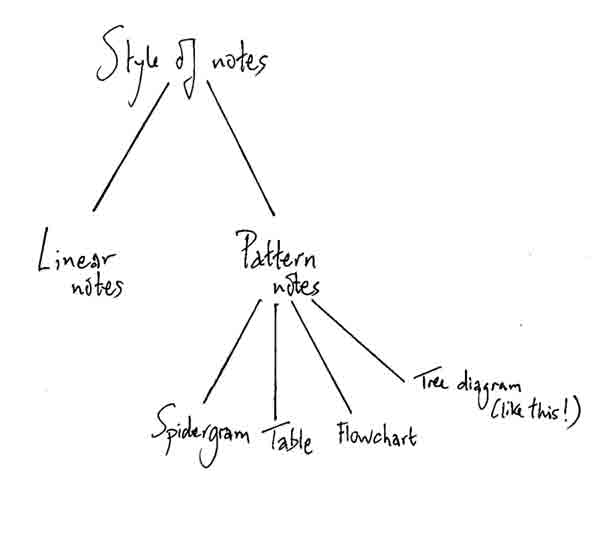Study techniques for students relevance can be easily understood if we recall the effects of academic performance on learners’ self-esteem and self-concept. People have different intellectual capacity or Intelligence quotient (IQ) and also, proceed differently when it comes to the academic matters. We all have different favorable time to study. Neither do we spend the same time on prep for a test or exam.
However, there are some measures that scientists in the areas of psychology and education have found to be common among all normal human being. By Normal, I mean learners with average to high intellectual capacity). It doesn’t matter how difficult the subject is, with these measures, at least with enough time you can fully prepare for your test or exam.

Table of Contents
Practice and repetition
This is the most common and effective study techniques for students, regardless of their IQ. It is a rehearsal technique; you can use to reinforce your textbook or notes reading. To succeed in this method, you have to read your notes and relevant text several times.
In addition to that, write down the summary of what you have read in your own words to check the level of your understanding. In this way, you will improve your retention and obviously your result (performance) in the test or exam. You can use this technique instead of memorization. It is further necessary that you rather engage yourself in a systematic, well planned, spaced-out study than mass cramming close to examination period.
Note Taking as study techniques for students
This is another method of effective study skill to prepare for exam and test. Even though many teachers give their learners notes by writing, dictation of just a PDF copy, you still need to engage in note taking during your private studies since this would help you to concentrate on what you are reading. Through note taking as one of study techniques, you can separate the important points from the supporting ones and give yourself more the examples where applicable. Doing this will mostly help you to interpret the ideas in the note and write them in your own words, draw the diagrams and sketches to improve your understanding the content further.
But what are the best note taking techniques?
Before getting into the note taking method as part of study techniques for students, it is important to note that, note taking should come after you have got an understanding of the content materials you are learning. After you are sure that everything is clear, then you can proceed as follows:
EXTRACT THEMES FROM THE STUDY MATERIAL
Get the theme or key idea that comes from the study material you are reading and develop it briefly in your own words and understanding.
USE THE SPRAYS TECHNIQUE

This is a method in study techniques involving a quick jotting or writing down your own ideas, as well as important words, principles and concepts from the material you are reading. You don’t need to do this in any specific order. You should rather jot these ideas down as they come across your impression. Later on, in the materials you are reading try to link the ideas and words together, to show their relationships. In this case, you could even mix the words with sketches, graphs and diagrams. However, they should always be linked with each other and the main topic should be put in the central position.
USE OF PATTERN NOTES
Notes could be arranged in a way that it would give a pattern i.e., bringing together cluster of ideas, concepts principles and key words on segments of the topic. Different patterns could be noted in different ways but as it sprays, they should be linked together. Pattern notes are useful in areas like Medicines, Engineering, Music, Fine Arts, etc.
PARAPHRASING IN STUDY TECHNIQUES
This is a method of note-taking which emphasizes taking the materials read paragraph by paragraph and converting them into one’s word. You can use this method in order to bring out the major ideas from the text you read, according to your personal interpretations of the material.
USE OF SUMMARISATION IN STUDY TECHNIQUES
Alternative to or supplementary to paraphrasing, is summarisation. This method consists of reading a whole passage or a piece of materials and ask yourself what the author meant by it. Thereafter, write down the response in your own words. You can always turn to the same passage in order to remind himself of the key words and ideas.
USE OF ABBREVIATIONS IN STUDY TECHNIQUES

You know, you are the manager of your own notebook. When the teacher or lecturer is talking, you don’t need to copy the exact words they say. You may equally use the symbols or coded to write down the main ideas from the lecture of lesson. This method saves you time and space and helps you catch up with important ideas particularly in lectures.
To successfully use this technique, you need to master the conventional symbols or abbreviation for different words. You may also come up with your own coding to make sure you are not left behind during the lecture. However, you need to be careful and cautious in interpreting the abbreviated words as well as the codes when revising. And more importantly, never use these codes on the examination answer sheet.
These are the major study techniques for students using the note taking techniques. Join use in our next post as we go through the different techniques of reading. In the meantime, let us chat; tell us if you were aware of these methods, have been using them in your prep? Or you have some more techniques that work better for you that you would like to share with our audience. Please write them in the comments down here to help one another improve our study skills.



